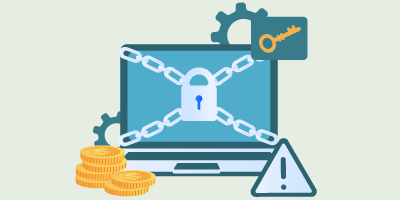Every business or organization should have security measures put in place to handle security incidents. In this video and blog post, we examine what security incidents are, different types of security incidents and how your business can be prepared.
What Are Security Incidents?
Security incidents can be described as events that may indicate an organization’s system and valuable data have been compromised or threatened. Security incidents may involve a Data Breach, Malware Attack, Phishing or Denial of Service Attack to name a few. If a security incident occurs, this could mean that the security measures that the organization put in place have failed or may not be strong enough.
Signs Your System May Have Been Breached:
Watch out for these signs to identify a possible security incident:
Network becomes slower
Browsers redirect to different sites
Files and servers have been encrypted
Excessive pop-ups
Data usage is increasing
Types of Security Incidents:

Data breach
A data breach occurs when confidential or sensitive information is accessed or stolen by unauthorized persons. As we grow with technology, more and more data is being added to the digital world and as a result data breaches have become a popular type of attack. Data breaches can be extremely costly for businesses, according to Verizon’s 2021 Data Breach Investigation Report (DBIR), the median breach cost for organizations is $21,659.

Malware attack
Malware attack is a type of security incident where cybercriminals use malicious software to damage a computer system or gain unauthorized access to data. A malware attack can come in many forms including, ransomware, spyware, command and control and more.

Phishing
Phishing involves fraudulent communication, typically an email, that’s designed to appear as coming from trusted or reputable sources to deceive users into revealing their credentials or sensitive business data. Verizon’s 2021 DBIR report found that phishing was present in 36% of breaches.

Denial of Service
According to the Cybersecurity & Infrastructure Security Agency, “A denial-of-service (DoS) attack occurs when legitimate users are unable to access information systems, devices, or other network resources due to the actions of a malicious cyber threat actor.”
A common method of attack that cybercriminals use are to flood a networks server with traffic, which overloads the server causing a DoS condition. Different types of services that may be affected by a DoS attack are email, websites and banking accounts.
Basic Mitigation Measures for Businesses:
Provide security awareness training
Hold regular security awareness training to ensure your employees have basic knowledge of cybersecurity threats to help minimize human error and block a possible breach.
Ensure employees know how to report a breach
Without an end user’s input and reports, security incidents could go undetected for long periods of time. So, it’s important to ensure that your employees are aware of appropriate channels within the organization to report possible security breaches.
Always report suspicious incidents
As an end user, you are the first line of defense when attackers attempt to breach your organization. Any security infrastructure can be compromised by human error or failure to report a possible incident. This is why it’s essential for end users to report a suspected security breach, even if it does not appear to be a significant threat.
A Threat Is Reported – What Happens Next?
In response to an incident being reported, your business can take the following steps:
- Take action to mitigate the security incident and prevent it from spreading across the organization.
- Perform additional investigation to document the scale and severity of the breach and type of institutional data that was potentially involved.
- Identify all exploited vulnerabilities.
- Revise or recreate protection policies.
Does your business or organization need assistance with preparing for security incidents? GraVoc provides expert Information Security services including Governance, Risk and Compliance (GRC) Services to businesses nationwide. Click the button below to learn more about our services and how we can help.
– Risk Assessment Services
– Information Security Program & Advisory
– Security Awareness & Tabletop Training
-Disaster Recovery/Business Continuity Planning
– Incident Response
Related articles
Change Healthcare Attack: Ransomware Protection Measures for Healthcare Organizations
In light of the Change Healthcare attack, we explore why hackers target healthcare and how healthcare can defend against ransomware.
GraVoc Recognized on CRN MSP 500 List for Second Year in a Row
For the second year in a row, GraVoc has been recognized on the CRN® MSP 500 list in the Pioneer 250 category!
PCI SAQ Types: Which SAQ is Right for Your Business?
In this blog post, we provide an overview of the SAQ types for PCI DSS v4.0 and how to select a PCI SAQ that’s right for your business.




